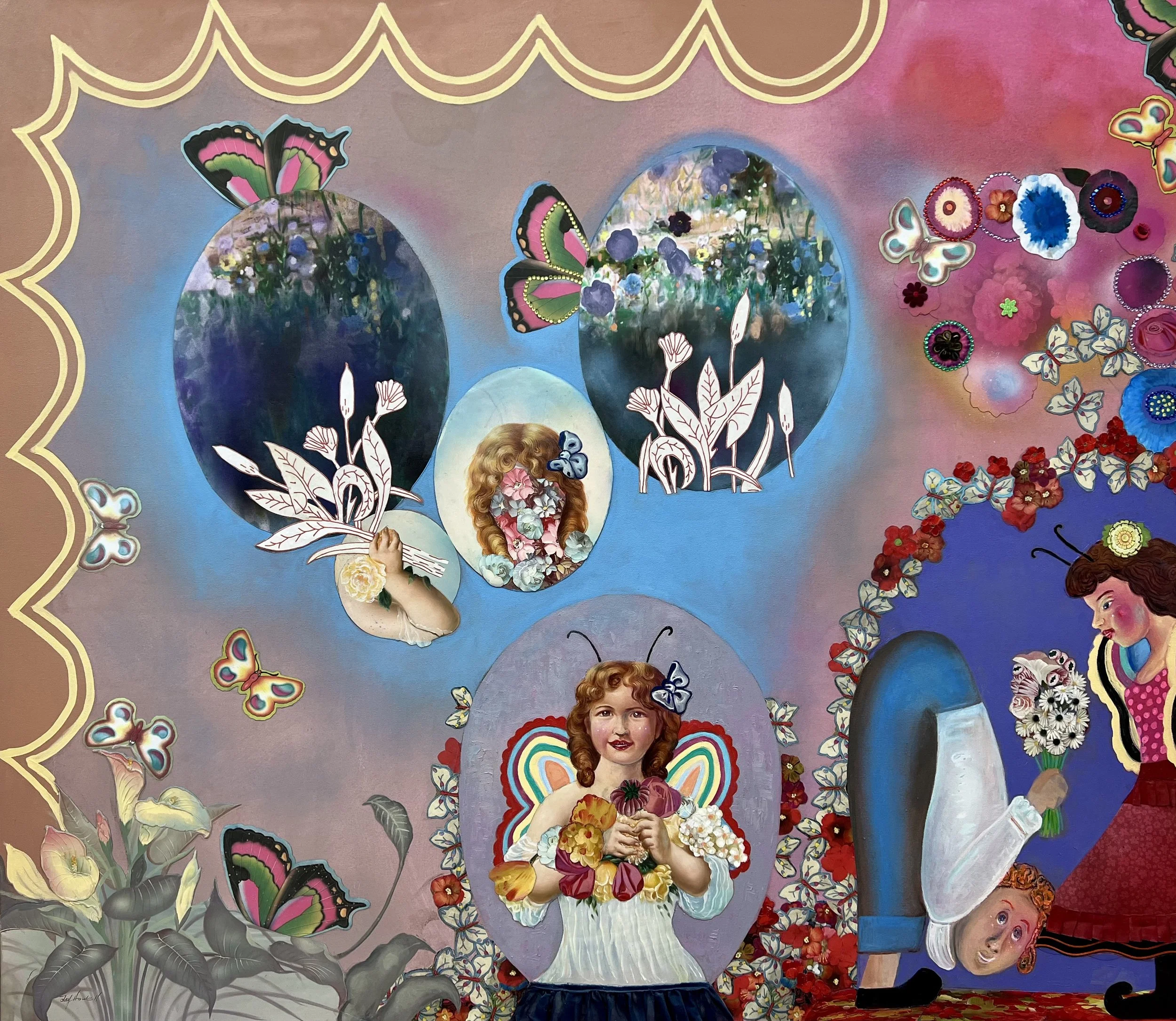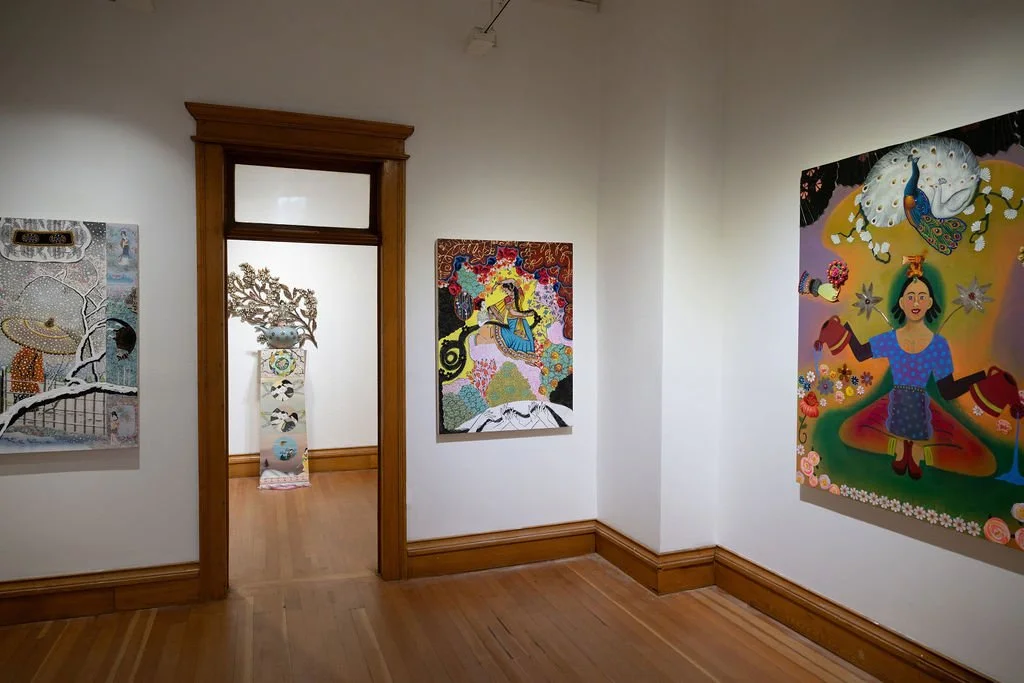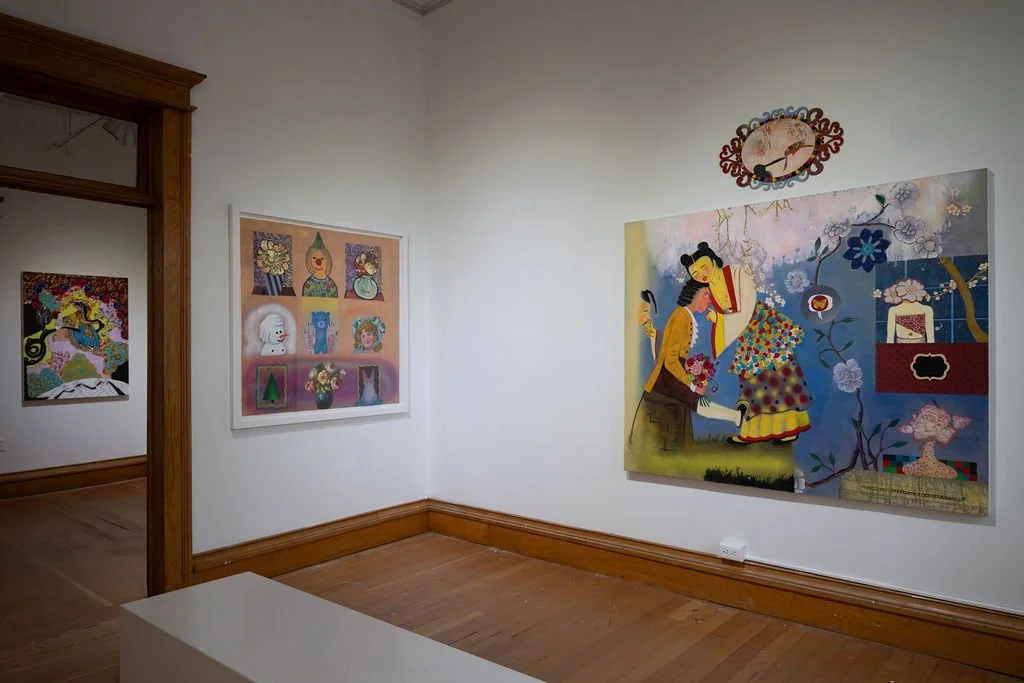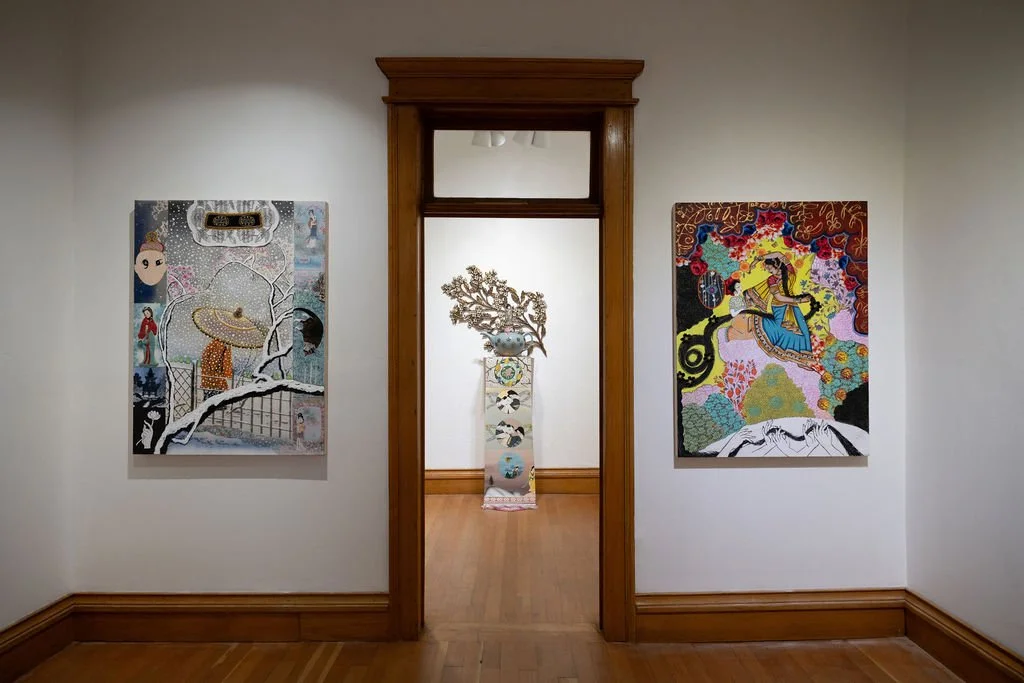Phyllis Bramson: The Bliss of the Picturesque
June 5 - July 26, 2025
Chicago-based Phyllis Bramson creates richly ornamental, excessive, and decadent paintings. She is greatly inspired by 18th–century Rococo and Chinoiserie, along with Chinese Pleasure Garden paintings and the French painters Boucher and Fragonard. The narratives in Bramson’s paintings remain incomplete, telling an open-ended story and resembling tropes concerning romantic folly. Her canvases are used as a repository for feelings, which often collide and intermingle between the personal and a grander narrative.
Bramson was a long-time professor at the University of Illinois, Chicago, and then a graduate advisor in drawing and painting at the School of the Art Institute of Chicago. Her work has been exhibited at the Museum of Contemporary Art Chicago, the Art Institute of Chicago, the Smithsonian Institution, and Corcoran Gallery of Art, among many institutions. She has had more than forty solo shows at venues such as the New Museum, New York; the Renaissance Society, Chicago; the Chicago Cultural Center; the Fort Wayne Museum of Art; Boulder Art Museum; the University of West Virginia Museum; and numerous galleries.
Bramson has been covered widely and recognized with numerous awards. She is the recipient of three National Endowments, a Senior Fulbright Scholarship, Louis Comfort Tiffany Grant, Guggenheim Fellowship, Rockefeller Foundation Grant, Artadia Award, Anonymous Was A Woman Award, and selected as one of the Women’s Caucus for Art Lifetime Achievement Awardees for 2014. She is represented by Engage Projects in Chicago.
The Bliss of the Picturesque
Phyllis Bramson’s collage-based paintings are infused with amusing anecdotes about love and affection in an often cold and hostile world. She uses source imagery from 18th-century Rococo and Chinoiserie, Chinese Pleasure Garden paintings, and the French artists Boucher and Fragonard, combined in her own unique style with contemporary kitsch. She often draws from fairy tales, which serve as inspiration rather than blueprint, as well as the work of Henry Darger. Bramson’s paintings are reactions to sensuous events, from the casual encounter to highly formalized exchanges of lovemaking. Refusing to separate matters of taste from larger questions about “good behavior,” her work embraces life’s imperfections and doesn’t take decorum all that seriously.
*Artworks are available for purchase. Pricelist available upon request.















